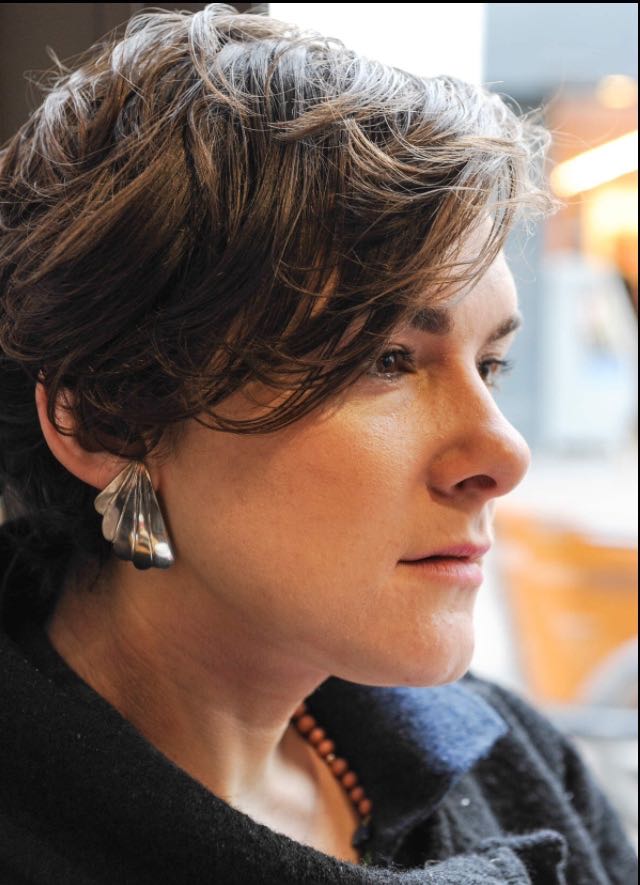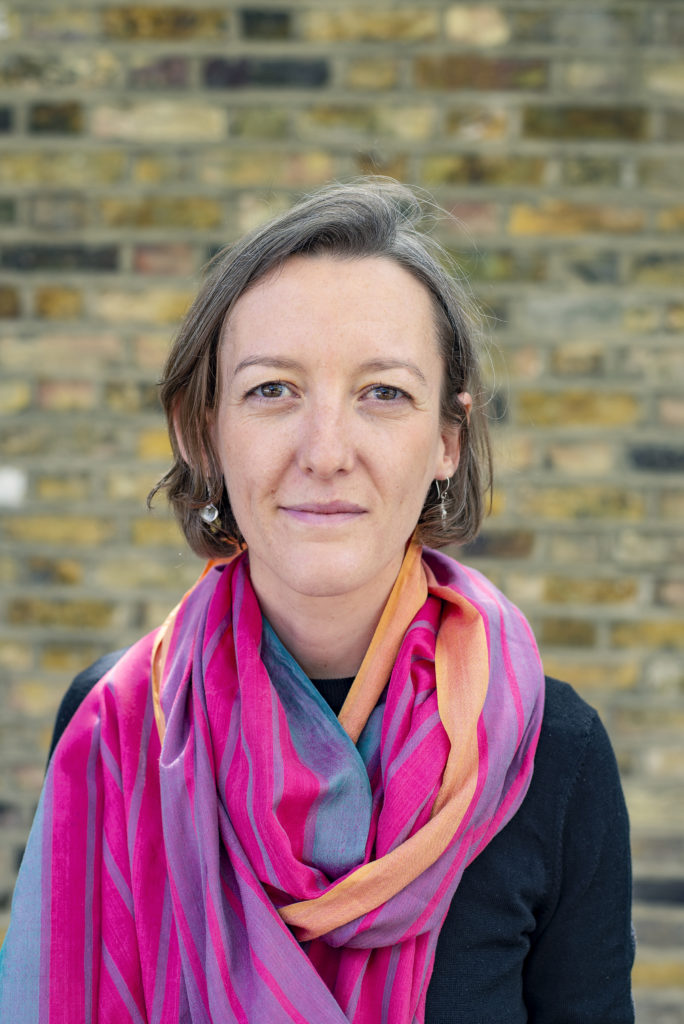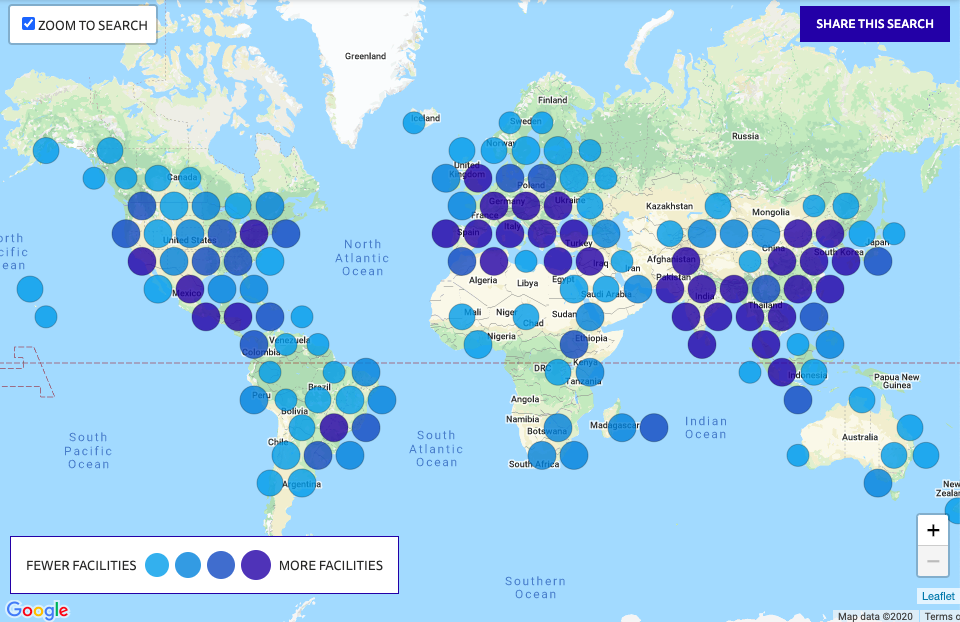Since late 2018, Azavea has served as the technical provider for the Open Apparel Registry (OAR), an open data map of facilities in the apparel industry. We are thrilled to contribute to an open data project that apparel brands, civil society organizations, academic researchers, journalists, and other groups use to understand the global apparel supply chain and make it more sustainable and equitable. We’ve been fortunate to collaborate with Natalie Grillon, the Executive Director of OAR, and Katie Shaw, the COO, who both have extensive experience in sustainability initiatives. We’re chatting with them about how open data and open source are becoming a larger part of the apparel industry.
Hello! Please introduce yourselves!
Natalie: Hi there! I’m Natalie and I’m the Executive Director at Open Apparel Registry. I’m based in New York.
Katie: And, I’m Katie, the COO at the Open Apparel Registry. Natalie and I have been working on a variety of projects together in the sustainable fashion space since 2016, starting work on the OAR together in Fall 2017. I was living in Mexico at that point (I’m now back home in London), so we’re very used to working together remotely. We actually worked together for a full year before we met in person!
How did you first become involved with the sustainable fashion movement?

Natalie: I came face to face with the issues in the fashion industry living and working in Northern Uganda in 2013. I had been working in international development for the past five years and was hired as an operations manager for an agricultural company that worked with farmers to grow cotton and organic cotton, among other things.
One morning, I was organizing a shipment of cotton to be sold to a broker, and to ship off to some far off place in the world, destination unknown. I saw the newsflash in the corner of my screen; a factory had collapsed, trapping and killing over 1,000 garment workers, making clothing for sale in Western countries. I looked down at my shirt and wondered if it had been made in a factory like that. And then I looked at the cotton shipment and realized I had no idea if it was destined for a factory like that. This was the moment I began the work to better understand fashion supply chains, and the people and places that made our clothes.

Katie: I’ve been working in sustainability for around 12 years now. In the past, I’ve worked as a generalist across multiple different sectors, with a focus on communications and project management. For around two years in one role, a global fast fashion brand was a major client of mine. At that stage, the focus in the apparel sector was on the social impacts of the supply chain, but I knew it was only a matter of time before the world woke up to the environmental impacts of the sector. It was the experience of working with that client that prompted me to shift my career to focus specifically on sustainability in fashion.
What do you wish people knew about clothing manufacturing and sales?
Natalie: The complexity of a piece of clothing – so many parts, so many steps, hands, trucks, ships, machines – so much work goes into it, and so much impact. I think it would help people appreciate, value and cherish their clothing more.
Katie: COVID-19 has prompted me to think a lot about power imbalances in fashion supply chains. The terms that manufacturing groups in the Global South are forced to accept by major Western brands are outrageous and, in my view, are the root of the sector’s numerous other problems. The entirely unsustainable business model that fast fashion is built on leads to so many other issues – both social and environmental. It’s a mess, but I do believe it can be fixed.

Credit: Mile 91 for Laudes Foundation
What role does open data play in the apparel industry currently? What role would you like it to play?
As a sector, fashion is a laggard when it comes to technological adoption, so awareness of open data was virtually non-existent before the OAR was built. That’s changing gradually, but there’s still more work to be done to help users and contributors understand why the model is a powerful one.
Together with other organisations in the sector, including the Clean Clothes Campaign and WikiRate, we developed the Open Data Standard for the Apparel Sector (ODSAS) to help industry professionals understand the importance of not just what supply chain data is disclosed, but how it’s disclosed. From our experience of working on the OAR, many people simply don’t know that data locked away in PDFs or tables embedded in websites are problematic when organisations want to move on and actually work with data, so ODSAS provides some helpful basic guidance on the best way to disclose data. We’ve found that lots of organisations appreciate being given explicit instruction for what to do, rather than figure out how best to disclose themselves.
Why did you decide that OAR should be an open data project built on open source code?
Supply chains in the fashion industry are incredibly complex and opaque. This complexity creates a barrier to improving social and environmental conditions, both in terms of facilitating collaboration between different stakeholders in the sector, but also in terms of accountability.
Data has been stuck in silos and lacked a universal, central ID through which systems could synchronize, making interoperability between systems impossible. Brands and factory groups alike become frustrated with the multiple IDs connected to the same facility, used individually by each of the many multi-stakeholder initiatives (MSIs) in the sector. There was no resource or oversight to understand where brands or MSIs shared interests in the same facility. Employees at brands, MSIs and civil society organizations would spend hours pouring over Excel spreadsheets looking for duplications, matches and overlaps.
The OAR was built to address this data challenge. At its heart, the OAR exists to drive improvements in data quality for the benefit of all stakeholders in the apparel sector. As well as many other efficiency and process benefits, the way the OAR organizes and presents data ultimately improves the lives of some of the most vulnerable workers in global supply chains.
As a sector, fashion is competitive and political, so the OAR’s identity as a neutral, pre-competitive tool working with open data and built on open source code has been crucial to building trust with stakeholders. It enables us to bring organisations together to work collaboratively to find solutions to industry challenges in a way that wouldn’t ordinarily be possible.
What open data related challenges were involved with setting up OAR? (i.e. access to data, licensing, building consensus for the work, open source requirements, etc)
Whilst we knew when we started work on the OAR that the quality of data in the apparel sector was poor, even at as basic a level as name and address information, we’ve been stunned at some of the data submissions we’ve received. There are all sorts of reasons behind this, including transliteration inconsistencies, a lack of structured address formats in key sourcing regions and the need to work with international character sets. China is known as the sewing factory of the world, but there are challenges to overcome working with partners there due to Government data laws and a national tendency towards closed, rather than open, systems.
Have you learned anything surprising as you’ve dug into the world of open data?
Big tech and the use (or mis-use) of data has been getting a lot of bad press in recent years – often rightly so. It’s been a refreshing learning experience for us to enter the world of open data and to discover a community of people working collaboratively to responsibly harness the power of data for positive outcomes.
What changes are making you hopeful about the future of the apparel industry?
Natalie: Open data! Interoperability! I’m biased of course, but this unsexy (to some) work we are doing in the background is enabling collaboration, which in turn empowers and enables the change and outcomes we need to see.
Katie: Whilst progress isn’t as quick as I’d like it to be, I think it’s only a matter of time before Government legislation forces the hands of brands and retailers to act more responsibly. In addition to that, there’s a new generation of digital natives growing up who not only understand the power of technology, but also aren’t prepared to accept the status quo. They’re challenging brands to raise their standards and they’re also thinking differently about their own purchasing habits. There’s still a lot more work to be done to continue to raise awareness of the issues, but the momentum is going in the right direction
The OAR team presented a keynote speech at the Linux Foundation Open Source Summit – Europe – in October 2019. Watch that below.

